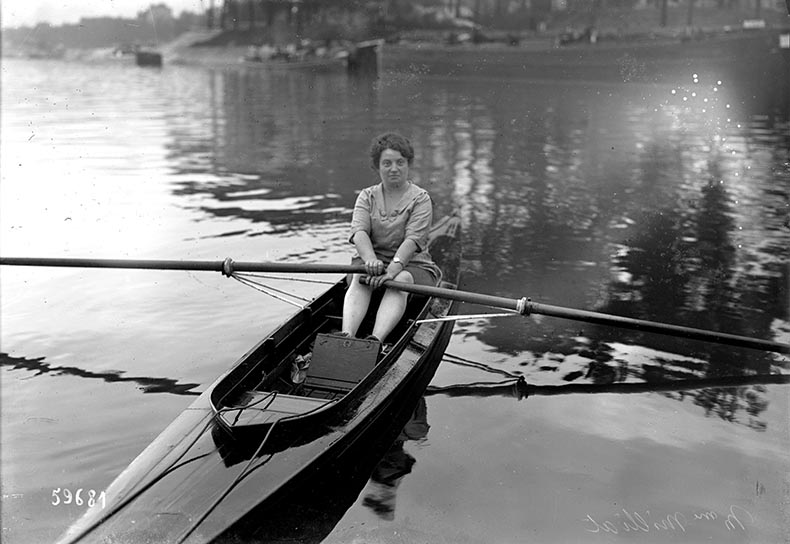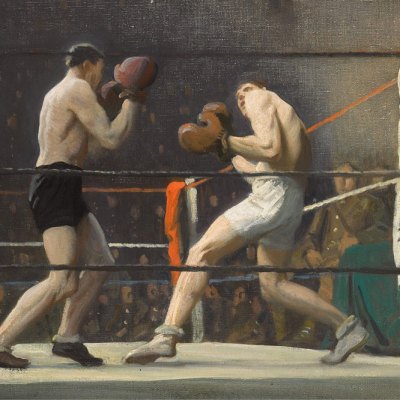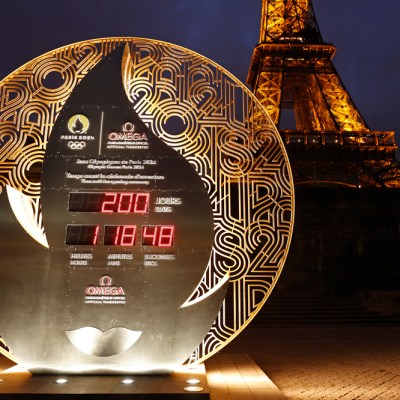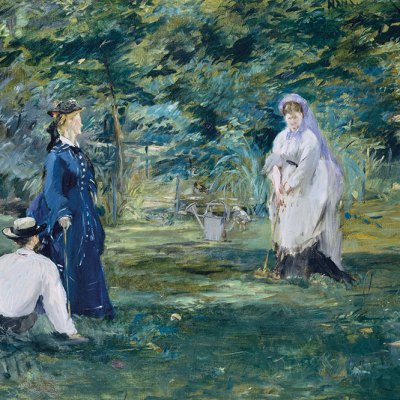From the July/August 2024 issue of Apollo. Preview and subscribe here.
For six months in 1931, the Bois de Vincennes in eastern Paris became home to a spectacular display of French colonial splendour. More than 100 hectares of parkland were given over to the Paris Colonial Exposition, a theme park designed to sell the moral and material benefits of France’s overseas territories to a public that, the government feared, had lost interest. Lured by the promise of a voyage ‘around the world in a single day’, more than eight million people attended the fair, navigating pavilions modelled on native architectural styles, from Polynesian huts to a full-scale plaster reconstruction of Angkor Wat.
The Bois de Vincennes bears little trace today of the Colonial Exposition, which was dismantled the following year. Only one building remains: the Palais de la Porte Dorée, an art deco extravaganza intended at the time to house a ‘permanent museum of the colonies’. With its neoclassical heft and matchstick columns, it has notes of the fascist architecture of the day. But the building’s monolithic qualities are softened by the 90m-wide bas-relief by Alfred Janniot that covers the entire facade, its stonework alive with exotic foliage and wildlife among which native workers toil to produce colonial wealth. Janniot’s idealised vision of French colonial rapacity has left a complicated legacy; the building endures, but not in the way its creators imagined.
Alice Milliat photographed in 1920. © Agence Rol, Bibliothèque nationale de France, Paris.

The Palais has been home to a museum of immigration since 2007 (though arguably the main draw is the tropical aquarium, installed in 1931). It is currently hosting ‘Olympisme: Une histoire du monde’ (until 8 September), a sweeping exhibition that takes visitors through the history of the modern Olympic Games one edition at a time, from Athens in 1896 to this year’s event in Paris. It’s one of many shows taking place across the city as part of the cultural programme required of every host city by the International Olympic Committee (IOC).
The Olympics have always been bound up with national self-expression; in their early years, they were adjuncts to three World’s Fairs, beginning with Paris in 1900. In keeping with the Palais’s role as a home for diverse histories, the curators of ‘Olympisme’ ask us to ‘read this story in the present tense’. The first exhibit positions a copy of a statue from the third century BC of two Greek wrestlers opposite a pair of massive photographs, taken in 2002 by Howard Schatz and Beverly Ornstein, showing half-naked male and female Olympic athletes of varied skin colours and body shapes lined up next to each other. Olympians today are not to be judged according to the ‘biased vision of beauty standards from Antique statues’ that characterised the early Olympic movement, with its idealisation of the Hellenic male body. Like the Palais, the Olympics must adapt to survive.
Elsewhere, our attention is drawn to those who were excluded from the official games. We see Alice Milliat, who fought for equal sporting rights for women and set up the Women’s World Games in 1922, looking justifiably piqued in a scull. There are large photographs of Jim Thorpe and Ahmed Boughèra El Ouafi, respectively the first Native American and North African to win gold medals. Both were later shunned by the IOC for daring to earn much-needed income as athletes, thus breaking the Olympic rule enforcing amateurism. The coverage of the 1968 games in Mexico City includes mention not only of the Black Power protests but also of the Tlatelolco massacre 10 days before the games, in which Mexican police shot dead hundreds of anti-Olympics demonstrators – an incident that does not often feature in official histories.
Ahmed Boughera El Ouafi winning gold in the Olympic marathon in Amsterdam in 1928. © Docpix

The organisers of Paris 2024 insist that these will be a ‘socially and environmentally responsible Games’. They will at least be the first Olympics in which as many women compete as men. In 2021 a statue of Milliat was unveiled at the French Olympic headquarters, to stand alongside that of the father of the modern Olympic movement, Pierre de Coubertin. A high-minded educationalist who preached a creed of sport for sport’s sake, Coubertin is still lionised by the IOC, but in France his reputation has suffered owing to his views on white superiority and the role of women in sport. His name has hardly been mentioned in Paris 2024’s official promotion material, while President Macron has refused calls by French IOC members to induct him into the Panthéon. Just as the Olympics are inherently political, so too are exhibitions about them. The problem with ‘Olympisme’ is that it clearly has no licence to ask penetrating questions about the IOC itself. No history of the games can be complete without a critique of the body that runs them. The curators do make a few challenging points at the end, but the text is inflected with an uneasy boosterism all too familiar from official Games material. The question that is never asked is whether we need the Olympics at all.
‘En Jeu! Artists and Sport (1870–1930)’, at the Musée Marmottan Monet until 1 September, focuses on a period when, having shaken off the heavy hand of the Salon, artists felt increasingly free to paint what they saw around them. For the Impressionists, this often included the kind of genteel sporting activities that had spread from England at the beginning of the century. A painting by Monet from 1872 of a regatta at Argenteuil sings with colour and the pleasures of bourgeois river life. Similar scenes by Renoir and Sisley emphasise how regattas, with their constant movement of sails, water and light, provided the Impressionists with their ideal subject matter.
The Wrestler (1852), Honoré Daumier. Photo: © Ordrupgaard Copenhagen/Anders Sune Berg

While participation in such sports was initially limited to the affluent classes, spectatorship was not. In Gustave Doré’s etching of Putney Bridge from 1872, the crowds are almost toppling off the bridge in anticipation of the arrival of the Oxford-Cambridge boat crews. Doré creates a vivid sense of urban overspill while also managing to contrast an articulated group of individuals in the foreground with the anonymous masses on the river below. Daumier’s The Wrestler (1852) is a study in estrangement from the crowd. We share the loneliness of the wrestler, waiting off-stage for his turn to fight, as he turns his back from the large audience. As time went on it was the crowd as much as the spectacle that drew artists’ attention. The exhibition ends with one of George Bellows’s dramatic studies of boxing, Club Night (1907). Prize fights had been banned in 1900 in New York State but the laws were easily circumvented by holding fights in private clubs. Melting faces in the crowd leer grotesquely. ‘I don’t know anything about boxing,’ said Bellows. ‘I’m just painting two men trying to kill each other.’
Aside from the satisfying big-ticket items there are many smaller pleasures, too: Daumier’s lithographs satirising the 19th-century health craze; a set of quicksilver ringside etchings by André Dunoyer de Segonzac from 1922. The highlight might just be a painting from 1906 of a French rugby match by the American artist George Oberteuffer. Unremarkable at first glance, it manages to capture something at the heart of organised sport – boredom. In a drab ex-urban environment, the sun struggles to penetrate the cloud layer as a group of men form a scrum on an expanse of grey-green grass. The grandstand is on the other side of the pitch; we may be alone out here. When the television cameras are turned off, this is usually all there is.
Le Foot-Ball (match de rugby) (1906), George Oberteuffer. © Collection de Bueil & Ract-Madoux, Paris

From the July/August 2024 issue of Apollo. Preview and subscribe here.


